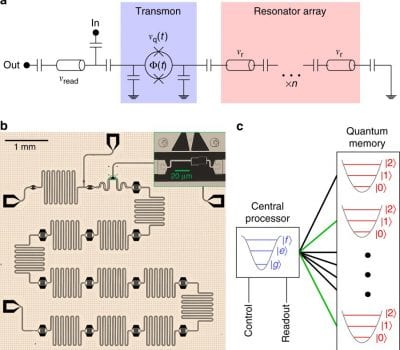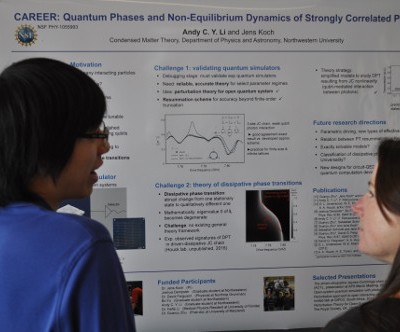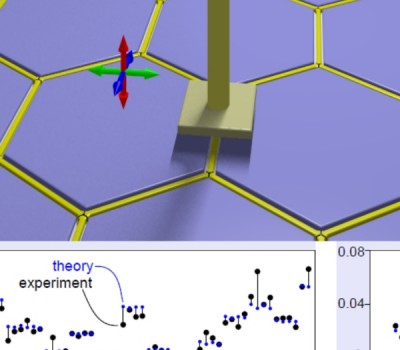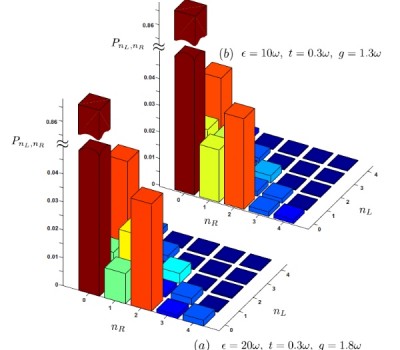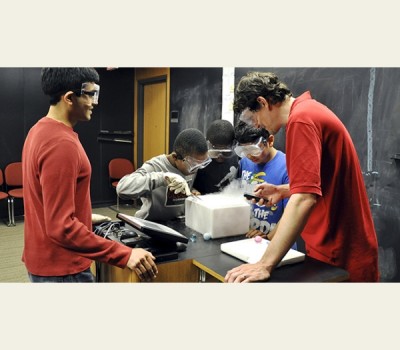In a new PRA paper, we theoretically analyze a scheme for fast stabilization of arbitrary qubit states with high fidelities, extending a protocol recently demonstrated experimentally. Our scheme utilized red and blue sideband transitions in a system composed of a fluxonium qubit, a low-Q LC-oscillator, and a coupler enabling us to tune the interaction between […]
Author: cyl460
New Nat. Commun. publication: Random access quantum information processors using multimode circuit quantum electrodynamics
Qubit connectivity is an important property of a quantum processor, with an ideal processor having random access—the ability of arbitrary qubit pairs to interact directly. This a challenge with superconducting circuits, as state-of-the-art architectures rely on only nearest-neighbor coupling. Here, we implement a random access superconducting quantum information processor, demonstrating universal operations on a nine-qubit […]
New NJP publication: Mapping repulsive to attractive interaction in driven–dissipative quantum systems
Repulsive and attractive interactions usually lead to very different physics. Striking exceptions exist in the dynamics of driven–dissipative quantum systems. For the example of a photonic Bose–Hubbard dimer, we establish a one-to-one mapping relating cases of onsite repulsion and attraction. We prove that the mapping is valid for an entire class of Markovian open quantum […]
New PRL publication: Universal Stabilization of a Parametrically Coupled Qubit
We autonomously stabilize arbitrary states of a qubit through parametric modulation of the coupling between a fixed frequency qubit and resonator. The coupling modulation is achieved with a tunable coupling design, in which the qubit and the resonator are connected in parallel to a superconducting quantum interference device. This allows for quasistatic tuning of the […]
Andy Li @ 2016 NSF MPS Poster Session
Andy Li presents his research during a poster session at the Northwestern site visit by the NSF MPS Directorate. (Photo credit: Roger Anderson)
Preprint on Imaging Photon Lattice States by Scanning Defect Microscopy
Microwave photons inside lattices of coupled resonators and superconducting qubits can exhibit surprising matter-like behavior. Realizing such open-system quantum simulators presents an experimental challenge and requires new tools and measurement techniques. Here, we introduce Scanning Defect Microscopy as one such tool and illustrate its use in mapping the normal-mode structure of microwave photons inside a […]
Andy Li wins World Quantitative and Science Scholarship
One of our group members, Andy (Cheong Yiu) Li, has received the 2014 World Quantitative and Science Scholarship by the WorldQuant Foundation. Find more information about the scholarship here.
Sci. Rep. article on Perturbative approach to Markovian open quantum systems
The exact treatment of Markovian open quantum systems, when based on numerical diagonalization of the Liouville super-operator or averaging over quantum trajectories, is severely limited by Hilbert space size. Perturbation theory, standard in the investigation of closed quantum systems, has remained much less developed for open quantum systems where a direct application to the Lindblad […]
New J. Phys. article on Dispersive regime of the Jaynes–Cummings and Rabi lattice
Photon-based strongly-correlated lattice models like the Jaynes-Cummings and Rabi lattices differ from their more conventional relatives like the Bose-Hubbard model by the presence of an additional tunable parameter: the frequency detuning between the pseudo-spin degree of freedom and the harmonic mode frequency on each site. Whenever this detuning is large compared to relevant coupling strengths, […]
Science Club Physics Field Trip
The field trip involved middle school students from Chicago. An article by Northwestern’s Science in Society covering the outreach event can be found here . More photos showing the event can also be found on Science in Society’s Facebook page.

